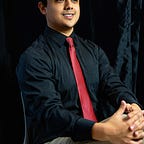A FISTFUL OF DOLLARS Review
For filmmaker Sergio Leone and his grizzled muse Clint Eastwood, their legacy is created right from their first collaboration’s beginning moments. A lone figure, the soon to be eternal “Man With No Name” (Clint Eastwood) rides his staunch horse near a dead tree with a single, empty noose hanging from it. Eastwood, with his perpetual tense glare simply glances at the knot and continues on, silent and determined as he begins his journey towards a film trilogy that will reverberate throughout cinematic history with its unlimited supply of style and attitude.
The first entry in the “Man With No Name” trilogy, A FISTFUL OF DOLLARS (an always and forever awesome film title) acts as an introduction into the sweaty, lawless world that said Man With No Name finds himself caught in. On his first cinematic journey, The Man finds himself in the Mexican border town of San Miguel, a ghost town dominated only by two warring gangs: the Rojos and the Baxters. From the moment he and his horse step into town, The Man is welcomed with loud insults and raised revolvers but in Eastwood’s steely eyes the audience is made abundantly aware of a man used to this kind of hospitality. Indeed, after being introduced to the town’s two families by the lowly but helpful barkeep (Jose Calvo), The Man immediately plans to play the two warring factions against another all in the service of making a quick buck, or more aptly, A FISTFUL OF DOLLARS.
In regards to this first installment (I have yet to watch the latter two, please don’t yell at me), Mr. Leone (along with a handful of writers such as Andriano Bolzoni, Victor Andres Catena, Leone himself and Jamie Comas Gil) reworks the Japanese film Yojimbo (made three years prior by Akira Kurosawa and Ryuzo Kikushima) into a unique Western. A film that finds more joy in showing off its stylistic flourishes than in its simply told story of deceit and double crossing, Leone and co. set the stage for a cinematic world of sweaty outlaws staring the hell out of each other. From the opening credits, which splay scratchy illustrations (created by Igino Lardani) and spastic but bombastic music from the always reliable Ennio Morricone, A FISTFUL OF DOLLARS hints at a Western visualized through a more artsy lens. From there, Leone and his compatriots deliver a cruel world dizzily displayed through the cameras of cinematographers Massimo Dallamano and Federico G. Larraya who effectively capture the desolate and dusty San Miguel with a mix of beautiful landscape shots and bewildering close ups and zoom ins. While the editing by Roberto Cinquini and Alfonso Santacana helps move the story along well enough from point to point, it tends to also hit those retro bumps of a static-y kind of editing where shots, especially during the action scenes, scatter our heroes and villains in confusion.
Despite some dated production issues, which in a way also give the film a sort of surreal edge, Leone’s film succeeds in large part to its successful establishment of a damn cool atmosphere and tone, which is headed by its central performer and dialogue that treads the line between cheesy and genuine badassery. To speak more on Mr. Eastwood’s performance, it was surprising to find myself kind of let down by his actual speaking performance as he delivers some lines with the energy of a piece of wood when not effectively finding some gold in the pulpy dialogue offered to him (understandable given the fact that he was working on a foreign set). However, as it goes for most characters in this film, the look of Eastwood and his supporting cast plays a much more important role in helping bring Leone’s film to memorable heights. From Eastwood’s patented steely glare to the rugged Rojo brothers who vary from grungy (Gian Maria Volonte’s Ramon), to suave (Sieghardt Rupp’s Esteban) to a kind of elderly regard(Antonio Prieto’s Don Benito), every character has a certain interesting feature to their look that makes even just the slightest appearance by them memorable. A good thing too as the dubbing at parts for some of the international cast members definitely could use some touching up.
Story wise, as mentioned before, Leone and co. settle with simplicity which only allows their style to stand out more. In the depiction of one man playing two terrible gangs against one another, A FISTFUL OF DOLLARS never requires to much thinking on the viewer’s part but it doesn’t have to. Even in a story that has our anti-hero showing the slightest hint of heart (towards an attractive, underwritten damsel in distress [Marianne Koch]), a character turn that was far from original even in the 60’s, it’s a testament to Leone’s handle on his material that these moments still rile up support from the audience. While the film hits some story lulls as it sulks through its moments of brooding looks and stare offs, the film’s final act of Eastwood facing off against the entirety of the town delivers the goods as Leone finally finds the chaotic harmony to be found in the film’s frenetic camerawork and scrappy editing.
While it never achieves classic status in my eyes, at least as a whole film, it’s hard to deny the intriguing pieces that Leone brings to the table. Indeed, maybe the best thing about the Italian director is that he was able to bring such memorable style to rather simple stories of nameless men out in the desert. Whatever the case, I’m looking forward to see what other stylish hijinks The Man With No Name is going to get up into future installments.
3.5/5
